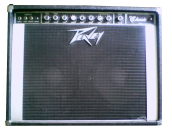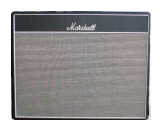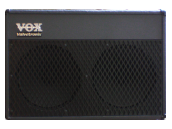About Amplifiers
Sound
Lasers
Video.
Tech Tips
Sound amplification
As audio engineers we've noticed that these days amplifiers can be divided into two types, audio/hi-fi and guitar amplifiers. Hi-fi amps rely on producing a distortion-free signal. Guitarists do not want hi-fi, they want that Valve Sound and the ability to overload and distort in a musical way and without damaging the amp. Back in the 50s and 60s, valves were the only way that amplifiers could achieve the power suitable for guitarists. Later transistor front end and effects were brought in, but valves were still used for the output. In the 70s the next generation of amps came in and they took advantage of advances in the semiconductor industry which now produced high output power transistors. The transistor amps did not sound the same and various effects and controls were added to try to make the transistor amp sound like a valve amp. They were not fully effective.
Back in the 50s and 60s, valves were the only way that amplifiers could achieve the power suitable for guitarists. Later transistor front end and effects were brought in, but valves were still used for the output. In the 70s the next generation of amps came in and they took advantage of advances in the semiconductor industry which now produced high output power transistors. The transistor amps did not sound the same and various effects and controls were added to try to make the transistor amp sound like a valve amp. They were not fully effective.
There are many differences between them: valves operate at a high voltage and high impedance hence they have a lot more punch. They also use an output transformer which distorts the signal. Valves also have a more curved gain graph which makes for a less caustic overload.

Finally, valves are microphonic. Tap your valves with a pen and you will hear a noise - this is the valves metalwork moving. Now mount these valves upside down and in the same cab as the speaker and the valve will vibrate along with the speaker. This gives a characteristic full volume screaming, crunchy valve sound when played loud or when played quietly produces a clean sound.
As well as the output valves' overload contributing to the valve sound, the input valves also contributed to the valve sound. Early guitarists soon found out that overloading the input stage gave more sustain. In the very early days we fed the signal from the guitar through a WEM Copycat to increase the gain and overload the input valve. Amp makers soon noticed and added an extra gain stage to allow the input stage to overload.
Then along came--
Digital Modelling.
This is done by applying a mathematical model of how a specific type or model of amp sounded. This doesn’t do a bad job, to be honest, and does allow you to sound like a rock or metal guitar hero on a small amp in your bedroom.
This type of digital modelling amplifier has many advantages, such as the ability  to offer a range of digital effects and reverbs. However some models are very over-specified, these models quote output powers of between 50 to 100 watts using 1 or 2 output chips. But upon reading the manufacturers' data on the chip one finds that although the chip will give out a 100 watts, the chip cannot be cooled fast enough to stop it from burning out! In fact, the manufacturer of the chip suggest using 2 chips mounted on a large heatsink to achieve a 25 watt amp.
to offer a range of digital effects and reverbs. However some models are very over-specified, these models quote output powers of between 50 to 100 watts using 1 or 2 output chips. But upon reading the manufacturers' data on the chip one finds that although the chip will give out a 100 watts, the chip cannot be cooled fast enough to stop it from burning out! In fact, the manufacturer of the chip suggest using 2 chips mounted on a large heatsink to achieve a 25 watt amp.
So do not use these small practice amps live on stage against a drum kit - you will burn it out! We have seen this done so often that we have built up a collection of boards with new ICs fitted so we can quickly service them. Do not try to replace these ICs yourself unless you are very good at soldering and have the correct tools. To be safe use a slave amp connected to your modelling amp.
Some of the new amps call themselves "valve sound", but they normally have no valves in them. Some do, but have a valve input state and it is this valve that is meant to give the valve sound, but apart from the high impedance input there is little difference until the valve starts overloading. There now a revival of the old valve amps and many companies like Marshall, Peavey, Carlsbro and Fender are reintroducing their vintage models as well as new valve models.
